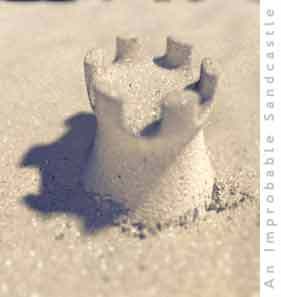Marc Abrahams's Blog, page 487
June 6, 2013
Ashwin Mudigonda joins Luxuriant Flowing Hair Club for Scientists (LFHCfS)
Ashwin Mudigonda has joined the Luxuriant Flowing Hair Club for Scientists (LFHCfS). He says:
I am a roboticist who spends most of his time figuring out how to get robots to behave in an industrial environment in the most efficient way possible. My research gives smarts to many of the traditional robots designed for the automotive industry. Some of the robots I work with are humanoids and are as bald as the Oort Cloud (I love that name), and, perhaps, some day, our research can meld with the Japanese android manufacturers to create handsome coiffed robots!
Ashwin Mudigonda
Senior Roboticist
Universal Robotics Inc.
Nashville, Tennessee, USA


A fairly novel way to display bugs
 Researchers at Toolik Field Station, Alaska, made this brief video of native bugs at work or play. The filming occurred at a place and moment in which it also captured a performance, by some of their fellow researchers, of Michael Jackson’s song “Thriller“. This is reportedly the northernmost performance of that song:
Researchers at Toolik Field Station, Alaska, made this brief video of native bugs at work or play. The filming occurred at a place and moment in which it also captured a performance, by some of their fellow researchers, of Michael Jackson’s song “Thriller“. This is reportedly the northernmost performance of that song:
(HT @ErinPodolak)
BONUS: Michael Jackson Surgery

June 5, 2013
They fall. They get up. They’re on the moon.
Joel Ivy collected and edited this video compendium of astronauts on the moon, falling and getting up. Or so says the info on YouTube.
(HT Lisa Yoo)

A detective on the twisted trail of a famous dead duck or ducks
Carly Carioli made himself into a detective/ornithologist to track down the strange tale of what happened to the dead duck and its confreres years after the famous incident that is known to science and history as the first reported case of homesexual necrophilia in the mallard duck. Carioli writes, on Boston.com:
Happy dead duck day: The long, strange trip of Kees Moeliker’s very strange birdUPDATED 6:16 PM with a response from Kees Moeliker, which has been appended to the bottom of this post
Today, in case you didn’t know, is Dead Duck Day. Exactly why it is Dead Duck Day requires some explanation. But the purpose of this post is essentially to ask: what ever happened to the dead duck that inspired it?
This photo shows Moeliker and one of the dead ducks in a joint appearance at Stonehenge, in southern England.
On June 5, 1995 — eighteen years ago today — Kees Moeliker, an ornithologist at the Natural History Museum in Rotterdam, heard a bang against the window and knew immediately what had happened: a duck had flown into the side of the glass-walled museum and died. As he has related countless times over the last decade, including most recently in February in a TED Talk entitled “How a Dead Duck Changed My Life,” what happened next would dramatically alter the course of his career….
This year, perhaps, they may raise a toast to the English composer Daniel Gillingwater, who is at work on turning the story of the necrophiliac duck into a proper opera, and is applying for funding in the hopes of staging performances around the country, perhaps with Kees along to narrate.
UPDATE. 6:16 PM: In response to my questions about the duck, Kees Moeliker responded, via email, with the following explanation. Mystery solved:
The actual duck, as described in my Ig winning paper (Catalogue number NMR 9997-00232), is in the collection of the Natural History Museum Rotterdam. It never left the building, other than some short trips to a tv studio in the Netherlands.For the Ig Nobel Prize ceremony in 2003 I brought a different mallard duck (with no story behind it, just an ordinary study skin I had specially prepared for this important ceremonial purpose: showing him at the Ig ceremony). This duck, I call him the Ig Duck, is the subject of your query… [read the full story on Boston.com]

Bankruptcy and Hell-o, Alabama
 The most populous county in the American state of Alabama has just declared bankruptcy. This is an opportune time for mathematicians to revisit the calculations that led to the awarding of the 1994 Ig Nobel Prize for mathematics.
The most populous county in the American state of Alabama has just declared bankruptcy. This is an opportune time for mathematicians to revisit the calculations that led to the awarding of the 1994 Ig Nobel Prize for mathematics.
That Ig Nobel Prize was awarded to The Southern Baptist Church of Alabama [who have since re-named themselves], for their county-by-county estimate of how many Alabama citizens will go to Hell if they don’t repent.
BONUS: Some history of that bankruptcy.

Slobodchikoff on the imminence of cross-species chit-chatter
A mere eleven years after the inventors of Bow-Lingual were awarded the Ig Noble Peace Prize, Con Slobodchikoff, professor emeritus at Arizona State University and President and CEO of Animal Communications, Ltd., explains how near we are to having computer-aided communications with some animals. Megan Garber interviewed Slobodchikoff for The Atlantic. Here’s a bit of that interview:
So I think we have the technology now to be able to develop the devices that are, say, the size of a cellphone, that would allow us to talk to our dogs and cats. So the dog says “bark!” and the device analyzes it and says, “I want to eat chicken tonight.” Or the cat can say “meow,” and it can say, “You haven’t cleaned my litterbox recently.”
But if we’re going to get to that technology, it’s going to take some research. And it’s probably five to 10 years out. But I think we can get to the point where we can actually communicate back and forth in basic animal languages to dogs, cats, maybe farm animals — and, who knows, maybe lions and tigers.
 In 2002, an Ig Nobel Prize was awarded to Keita Sato, President of Takara Co., Dr. Matsumi Suzuki, President of Japan Acoustic Lab, and Dr. Norio Kogure, Executive Director, Kogure Veterinary Hospital, for promoting peace and harmony between the species by inventing Bow-Lingual, a computer-based automatic dog-to-human language translation device.
In 2002, an Ig Nobel Prize was awarded to Keita Sato, President of Takara Co., Dr. Matsumi Suzuki, President of Japan Acoustic Lab, and Dr. Norio Kogure, Executive Director, Kogure Veterinary Hospital, for promoting peace and harmony between the species by inventing Bow-Lingual, a computer-based automatic dog-to-human language translation device.
BONUS: TechCrunch reviews, and Wired reviews, the iPhone app version of Bow-Lingual.
This video commercial is called “Bowlingual voice dog translator gets upgrade“:

Sandcastles in academia (part 3 – building and mobilities)
 Following along from the question ‘What’s the point of building a sandcastle?‘ we might perhaps go on to ask, ‘What exactly is a sandcastle?’ Authors Professor Michael Haldrup, and Professor Jonas Larsen of the Department of Environmental, Social and Spatial Change Space, Place, Mobility and Urban Studies, Roskilde University, Denmark, give explanations in their essay ‘Material Cultures of Tourism’ (Leisure Studies, Volume 25, Issue 3, 2006)
Following along from the question ‘What’s the point of building a sandcastle?‘ we might perhaps go on to ask, ‘What exactly is a sandcastle?’ Authors Professor Michael Haldrup, and Professor Jonas Larsen of the Department of Environmental, Social and Spatial Change Space, Place, Mobility and Urban Studies, Roskilde University, Denmark, give explanations in their essay ‘Material Cultures of Tourism’ (Leisure Studies, Volume 25, Issue 3, 2006)
Firstly, the construction methodologies are described :
“Buckets and spades enable the mobilization of sand and water that is necessary for human hands to build the sandcastle.“
The authors then go on to not only define a sandcastle, but also to explore the ‘embodied activities’ and ‘performances of nature’ which sandcastle-building involves :
“The ‘sandcastle’ is a heterogeneous order drawing imaginative, corporeal and object mobilities together. These mobilities are all elements of the networks that stabilize and regulate the sedimented practices that transform the endless mass of white, golden, fine-grained or gravelly sand into a habitat; a kingdom of sand imbued with dreams, hopes and pride.“
More details from the essay can be found here :
This concludes our brief Improbable examination of Sandcastles in Academia.
BONUS : Dutch inventor Wilfred Stijger demos his hand operated arenaceous sculptural sphericalizer a.k.a “The Willysphere”

June 4, 2013
“Known to cause” Claim of the Month: sleepy sexual perception
Brain research takes many forms. Here is one such form, announced in a May 30, 2013 press release from the American Academy of Sleep Medicine:
Sleep deprived men over perceive women’s sexual interest and intent
Due in part to frontal lobe impairment, sleep deprivation negatively influences cognitive variables that play a role in sexual decision-making
…According to the authors, sleep deprivation is known to cause frontal lobe impairment, which has a negative effect on decision-making variables such as risk-taking sensitivity, moral reasoning and inhibition…. ”Our findings here are similar to those from studies using alcohol, which similarly inhibits the frontal lobe,” said co-principal investigator Jennifer Peszka, PhD….
That seems to include the entirety of the study’s info about the brain.
The study consisted of having 60 students answer survey questions, before and after one night of sleep deprivation, including this one: “When a woman goes out to a bar, how likely is it that she is interested in finding someone to have sex with that night?”

Carnivorous, Green Approach to Getting Malaria Mosquitoes
A progress report on a slow, steady approach to controlling malaria:
“Using carnivorous plants to control malaria-transmitting mosquitoes,” Jasper Ogwal-Okeng, Mary Namaganda, Godfrey Sande Bbosa, James Kalema, Malaria World, 2013, 4, 10. (Thanks to investigator Bart Knols for bringing this to our attention.) The authors report:
“This GCE project set out to develop a novel way of controlling malaria-transmitting mosquitoes by deploying live, insect-eating plants around houses and in mosquito breeding sites. Field surveys were undertaken to collect and identify carnivorous plants. Aldrovanda vesiculosa and Utricularia reflexa were collected from swamps in various locations in Uganda and brought to the laboratory where they were kept in distilled water into which larvae of Anopeheles gambiae were introduced and the impact of the plants studied.”
BONUS: An approach derived from the experimental (and Ig Nobel Prize-winning) discovery that common malaria-transmitting mosquitoes are strongly attracted to the smells of limburger cheese and the smell of human feet:
“Outdoor mosquito control using odour-baited devices: development and evaluation of a potential new strategy to complement indoor malaria prevention methods,” Fredros O. Okumu, Robert D. Sumaye, Nancy S. Matowo, Stephen P. Mwangungulu, Emmanuel W. Kaindoa, Irene R. Moshi, Edith P. Madumla, Dickson W. Lwetoijera, Malaria World, 2013, 4, 8.
BONUS: Bart Knols explains some facts about malaria-carrying mosquitoes:
BONUS: An Associated Press report about work that builds on that Ig Nobel Prize-winning work: “Stinky feet may aid malaria traps” (Thanks to investigator Hugh Henry for bringing this to our attention.)

Technical innovation: Combined life preserver and traveling bag
No matter what you may think, this is described as a combined life preserver and traveling bag. See it, and read a description, on page 679 of the November 1915 issue of Popular Mechanics magazine.


Marc Abrahams's Blog
- Marc Abrahams's profile
- 14 followers




